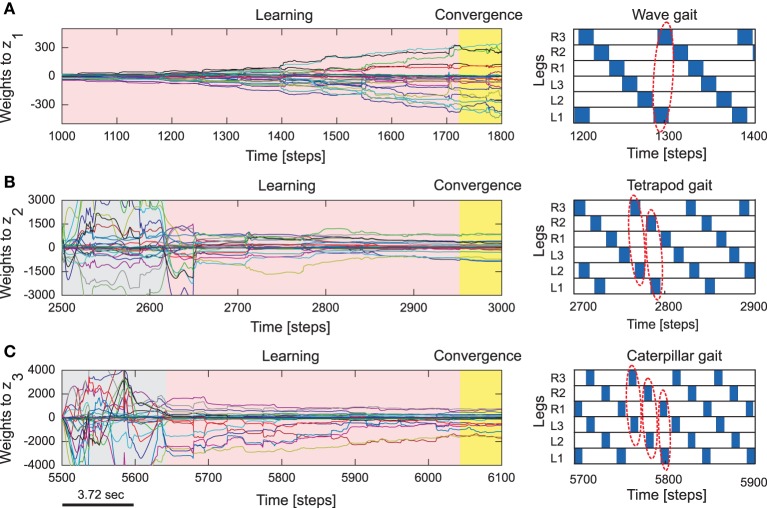Figure 4.
Reservoir-to-readout weight adaptation during online learning. (A) Changes of 30 weights projecting to the first readout neuron (z1) of the forward model of the right front leg (R1) while walking with a wave gait. During this period, weights projecting to the second (z2) and third (z3) output neurons remain unchanged (i.e., they are zero). (B) Changes of the weights to z2 while walking with a tetrapod gait. During this period, the weights to z3 still remain unchanged and the weights to z1 converge to around zero. (C) Changes of the weights to z3 while walking with a caterpillar gait. During this period, the weights to z1 and z2 converge to around zero. At the end of each gait, all weights are stored such that they will be used for locomotion in different environments. The gray areas represent transition phases from one gait to another gait and the yellow areas represent convergence. The gait diagrams are shown on the right. They are observed from the motor signals of the CTr-joints (Figure 5). White areas indicate ground contact or stance phase and blue areas refer to no ground contact during swing phase. As frequency increases, some legs step in pairs (dashed enclosures). Here convergence implies no significant change in the vector norm of the readout weights.

